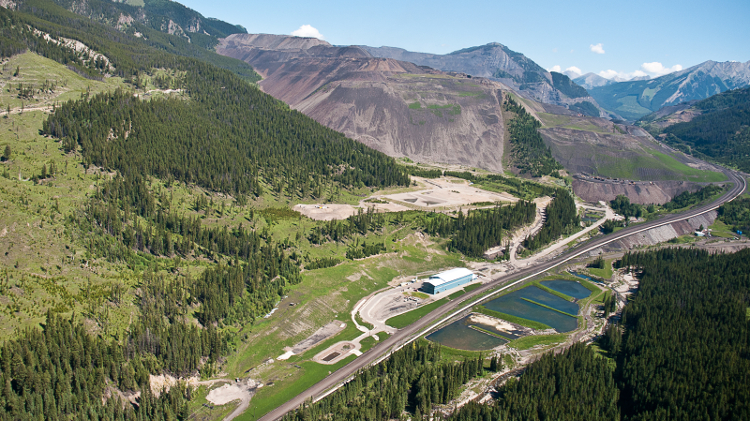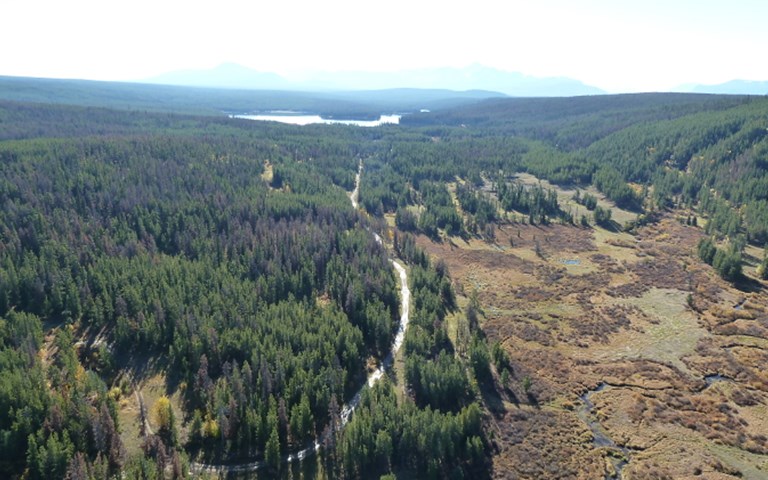This summer both the Tsilhqot'in National Government and the federal environment ministry filed injunction requests to stop exploratory work from being done at New Prosperity, after Taseko received a multi-year permit from British Columbia. Courtesy of Taseko Mines
Taseko Mines was denied its dual judicial review requests into the federal government’s decision to reject its New Prosperity project.
The Federal Court of Canada rejected Taseko’s requests to review both the environment minister and Governor in Council’s 2014 decision that New Prosperity was likely to cause significant adverse environmental effects, and the review panel report on the copper-gold project that informed the minister’s decision.
The court also rejected the company’s constitutional challenge to the Canadian Environmental Assessment Act (CEAA 2012) under which the project was evaluated.
The Dec. 5 decisions ordered Taseko to pay the court costs of the Tsilhqot’in First Nation, whose declared title land is close to the project, and the Government of Canada.
Tsilhqot’in National Government director and Yunesit’in Chief Russell Myers Ross said in a press release he was pleased with the court’s decision, and called Taseko’s efforts to revive New Prosperity a “waste of time and public money.” He added that “I believe it is necessary for this company to move on from fantasizing about this destructive project.”
When reached by email Brian Battison, Taseko’s vice-president of corporate affairs, said the company had no comment. “We are reading and considering the decision,” he wrote.
Federal Court Justice Michael Phelan disagreed with Taseko’s assessment that two sections of the CEAA 2012 fell outside the powers of Parliament and trampled over the authority and discretion of the provincial government, and should therefore have no effect.
Sections 5 and 6 of CEAA 2012 say a project proponent may not carry out any part of their project “if that act or thing may cause an environmental effect” to federal lands, fish, aquatic species and bird habitats, and Indigenous Peoples’ health and socioeconomic conditions, physical and cultural heritage, and use of land and resources for traditional purposes.
Phelan wrote in his judgment that “Indigenous people have many of the same interest as non-Indigenous people, and these interests are often uniquely at risk in ways that the interests of non-Indigenous people are not … It would be inappropriate to modify [Parliament’s power to respond to substantial risks of harm to Indigenous groups’ unique interests] for the protection of a general power” like provincial jurisdiction.
Related: Taseko, other miners face off against activist shareholders
In its requests for judicial reviews, the company took issue with a closed-door meeting held between the Tsilhqot’in National Government and then-environment minister Leona Aglukkaq after the panel’s review had concluded, as well as the inclusion of a 59-page submission opposing the project that was included in the minister’s briefing notes on New Prosperity, it said in its application to review the minister’s decision. Taseko argued it did not have the opportunity to review the submission or include its own follow-up brief.
Phelan rejected the argument that the “asymmetry” between the treatment of the company and the Tsilhqot’in led to a lack of procedural fairness. “Procedural fairness does not always require symmetry, and there are circumstances in which fairness necessitates a degree of asymmetry,” he wrote. “The Crown’s duty to consult First Nations is one such circumstance.
“Taseko was owed a duty of procedural fairness during the court of the environmental assessment process; but it was not entitled to an identical process as the consultation process according to the [Tsilhqot'in National Government].”
Taseko also argued that it was entitled to a “high degree of procedural fairness” that was not met by the review panel. It objected to a “late” technical memorandum submitted by Natural Resources Canada near the conclusion of the review panel process, which it said added new information that the company was not able to rebut.
The court, however, disagreed, finding that the technical memorandum was a summary of evidence already given during the review. “The panel did not fail to observe principles of procedural fairness by accepting and relying upon the technical memorandum,” Phelan wrote in his second decision.
New Prosperity has been plagued by setbacks for years. The project has already been rejected by the federal government twice, in 2010 and 2014, due to environmental concerns. This summer both the Tsilhqot’in National Government and the federal environment ministry filed injunction requests to stop exploratory work from being done at the site, after the company received a multi-year permit from the outgoing Liberal government in British Columbia.




